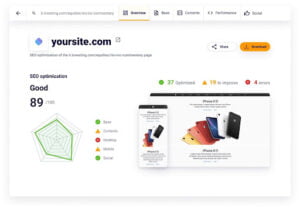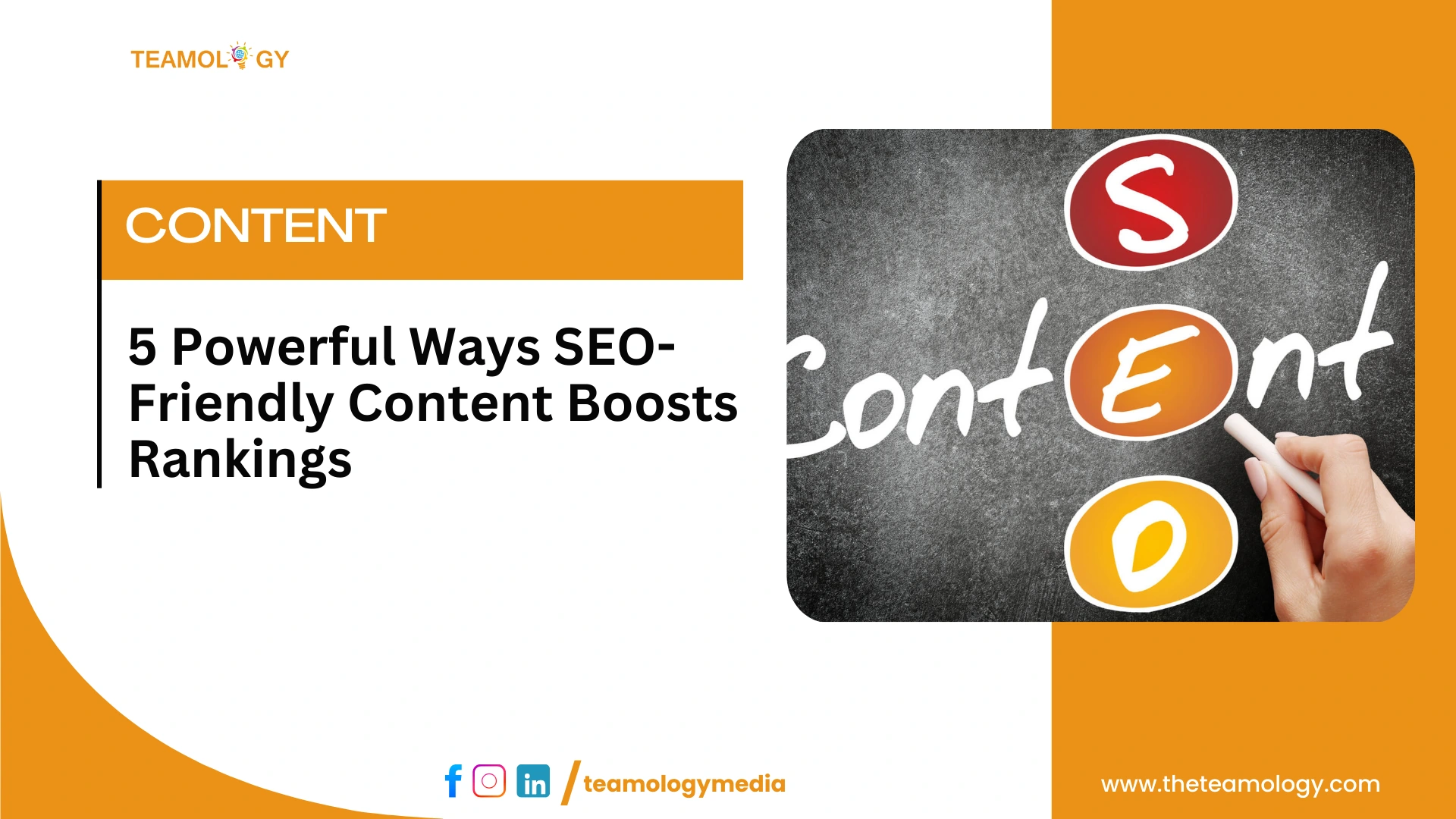Recently, one of my friends has opened a tourism business. He has a website, but the irony is that nobody is reaching out to him! Why is he not getting all those valuable clients?
In today’s digital age, an online presence is key to making a business sustainable. However, for that to happen, building a website is not enough. You also need to rank your website higher on the Google search engine. But how to achieve this? The answer is SEO-friendly content.
In this blog post, we will discuss what SEO-friendly content is, what its key parameters are, and how to measure and analyze its performance.
Understanding SEO-Friendly Content
Content means all written and visual elements that appear on a website. SEO-friendly content is crafted keeping the search engine algorithm in mind and also valuing human intent. It is tailored to meet all the criteria that search engines use to rank a webpage, resulting in increased chances of its ranking higher in search engine result pages.
Although SEO-friendly content is optimized for relevant keywords that people are searching for on the internet, However, those keywords must appear naturally inside the content and not be stuffed.
Benefits of SEO-friendly content:
Content optimized for search engines can significantly increase the rank of a website by directing more organic traffic to the site. More traffic means people are finding your website content engaging, and they are spending more time on it. This increased visibility fosters brand awareness and credibility, resulting in more leads and conversions.
Key factors for creating SEO-friendly content:
1. Keyword research:

keyword research
Keyword research is the process of finding out what your target audience is searching for on Google. Once you discover that building a content strategy becomes easy,
There are several tools available, like Google Trends, Semrush, Ahref Keyword, and Google Adwords keyword planner, which can help you find keywords relevant to your niche along with their query volume.
There is no hard-and-fast rule on how many times you can place each of your keywords in your content. Here, the catch is that you should avoid overusing them. Generic SEO practice says you use a keyword 1-2 times in every 100 words, which gives a keyword density of 1-2%. Also, you cannot force a keyword in certain sections of your content. It will make the content rather awkward. Let your keywords find their natural spot.
Most of the time, users search for something on Google with search terms that are 1-2 words long, but if that fails to give them the content they are seeking, they may search with longer terms. These are called long-tail keywords. You should optimize your content not only for shorter keywords but for these long-tail keywords too.
Here is an example. If someone is searching “best restaurants in Kolkata” on Google, he or she may get all the premier restaurants in the city, which may not be the exact search intent of the user. The user may be more interested in finding a list of the best restaurants on Park Street. So “best restaurants in Park Street, Kolkata” will be a more detailed search, providing the desired results.
2. Quality and value:
The AI writer vs. human writer debate is buzzing these days! Honestly speaking, AI-generated content can be good and can sometimes surprise you with sheer quality, but somehow it lacks the personal touch and unique perspective that only comes from real-life experiences. Human writers can infuse subtle nuances and emotions that resonate deeply with the target audience.
So focus on crafting original content that offers more value to your audience than AI would. Personalize your content according to the specific needs of the people. Conduct thorough research on the topic at hand and produce content that is both informative and engaging. By doing so, you will rank your website and build a genuine connection with your audience.
3. Content optimization:
There are ample advantages to designing a content structure that is clear and concise. A clear and concise content structure will make the content more digestible for the readers. It will also help the Google search algorithm find the content, which ultimately boosts its ranking in the search engine result pages.
Use the H1 tag for the headline and the H2 and H3 tags for subheadings. Also, use bullet points in your content. This is called formatting the content, making it more readable and enhancing audience engagement.
After all, would you be interested in reading a long and boring paragraph of 100 words, or would you prefer going through a written piece spit in subheadings and bullets?
Have you noticed the short text that appears below the links to websites on search engine result pages? This is known as a meta description. It is basically a quick summary of what the website is all about. It is more of a pitch to convince users that the webpage is exactly what users are looking for.
Image alt text is a short description of a webpage image that search engine crawlers look for in case the image fails to load on the user’s screen. The crawler knows what the image is all about from this.
4. User experience:
Quick question: would you like to click on a link that has a video or infographic in it or a link that has boring text? I know most of you (especially Gen Z) will answer the link with a video or infographic.
A recent study says video or visual content is growing in popularity over written content. So adding multimedia elements to your content can be an effective SEO strategy to increase the chances of users being directed to your website. Not only that, images and videos have a profound impact on the human mind, generating feel-good emotions and uplifting moods. So they will likely spend more time on your web pages, reducing the bounce rate and boosting session duration.
Link building is an essential part of SEO. No matter how good your content is, unless Google crawlers can’t follow at least one genuine link, it won’t rank your content on the grounds of lack of credibility.
There are a few tips to do that. Add reliable statistics to your content for your users’s reference. Do a lot of guest posting on popular websites like Medium and Quora to get healthy backlinks. Collaborating with social influencers has become a new and trendy way to increase backlinks.
A study says 92.3% of internet traffic will come from mobile devices in 2024. So optimizing your website for mobile is not optional but mandatory. If your website does not run on mobile, you are losing valuable traffic, lowering your website ranking.
Make your website responsive so that it perfectly fits mobile screens. Also, optimize page load time for mobile devices.
5. Measuring and analyzing SEO performance

Now that your SEO-friendly content is ready, the next step will be to measure and analyze how your content is performing. The go-to tools for measuring your SEO performance are Google Analytics and Google Search Console. Such tools will help you with data like traffic, bounce rate, time spent on a page, keyword ranking, engagement rate, and organic conversion rate.
These valuable insights will help you revise your content marketing strategy by refining your target audience, optimizing your content, and maximizing your ROI.
Final thoughts: Boost your online presence with SEO-friendly content
Crafting SEO-friendly content not only improves your website ranking on search engines but also empowers you to attract the right visitors, engage them with high-quality, valuable content, and convert them into leads or conversions.
If you own a business or want to build your personal brand, it is highly recommended that you follow all the tips and tricks mentioned above to see a surge in your website traffic, build brand awareness, establish yourself as an authority in your niche, and ultimately achieve your business goals.


